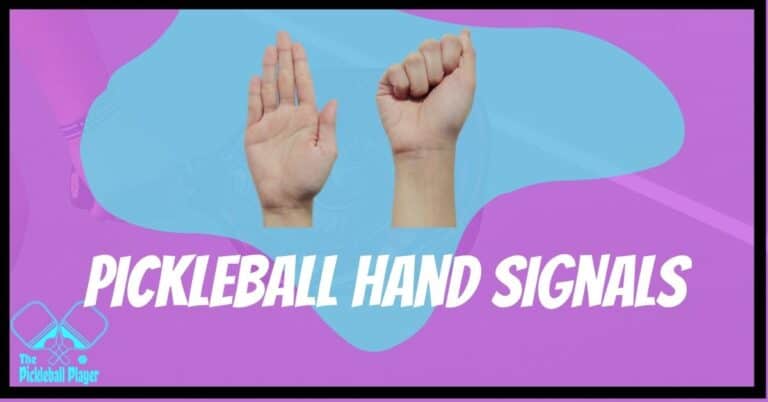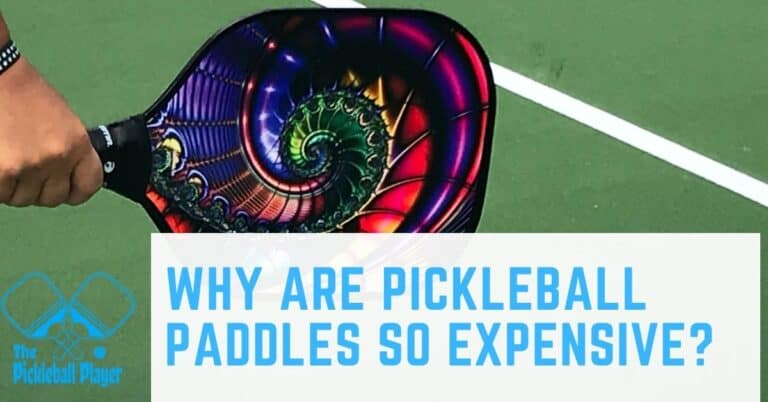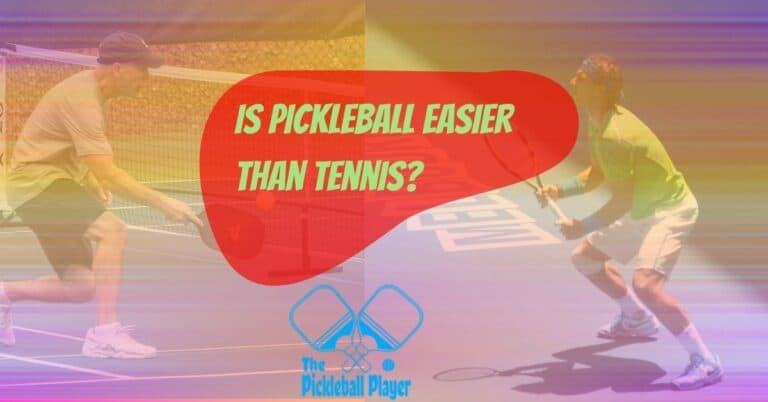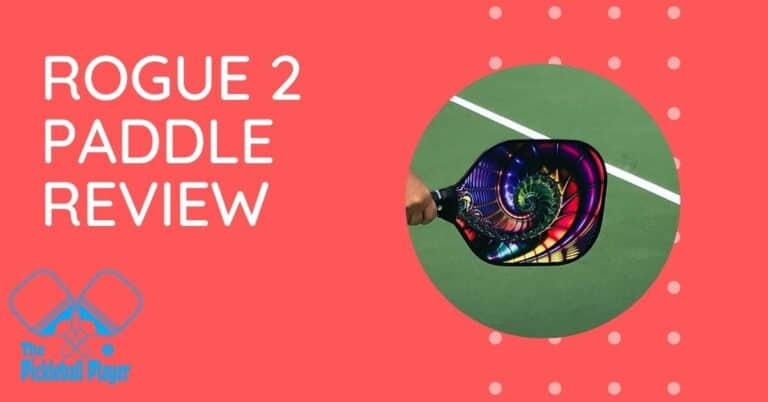Are Wooden Pickleball Paddles Good?
If you’re new to pickleball, you might want to know if wooden pickleball paddles are a good option. With so many choices and advanced technology out there, it’s not easy to pick a paddle.
Wooden paddles were the very first paddles used to play pickleball, and they were the only option for a long time. Thus, we can’t say that you can’t play pickleball with them.
However, whether they are good for you or not is a debatable question. Mostly, wooden pickleball paddles are associated with beginners or young players.
Let’s try to find if wooden paddles are a good or bad option and who can get maximum benefits.
Table of Contents
- Are Wooden Pickleball Paddles Good?
- Pros of Wooden Pickleball Paddles
- Cons of Wooden Pickleball Paddles
- Who Should Buy a Wooden Pickleball Paddle?
- History of Wooden Pickleball Paddles
- The Bottom Line
Are Wooden Pickleball Paddles Good?
There is no definite answer to this question as to whether wooden pickleball paddles are good or not. It is more of a personal preference and needs. For some players, wooden paddles may be a good option, yet they may not be as beneficial for others.
For instance, if you’re looking to improve your game or are serious about pickleball, wooden pickleball paddles are never a good option. If you’re buying a wooden pickleball paddle for a ten-year-old playing for the first time, it’s perhaps the best choice.
It is a fact that technology and the paddle industry have improved a lot, and there are so many better options. Players can choose the paddle’s size, weight, surface material, and core according to their needs and gaming style. This gives a wooden paddle a lot of competition.
On the other hand, wooden paddles have their benefits and perks. They have evolved a lot since the very first wooden paddles were introduced. Modern wooden paddles are not as heavy or rough as before. Still, when compared to other materials like graphite or composite, they aren’t even near.
Let’s discuss some pros and cons of wooden paddles to determine if they are good paddles or not.
Pros of Wooden Pickleball Paddles
When picking up the paddle, its weight, size, grip, power, and price are some facts to consider. You can choose wooden paddles based on these reasons.
Cost
Many beginners and new players don’t want to spend a lot on their paddles. Thus, for them, wooden paddles are the best option. They are cost-effective, and their price range between $10-$30.
The affordability of wooden paddles is a huge advantage compared to composite or graphite, which cost from $40 to $200 and even above.
Durability
You might need a few months or weeks to get used to the game as a beginner. Changing and buying new paddles is not an option. So, that is where wooden paddles come. They are durable; unlike composite, you don’t need to change them every few months or even once a year.
You can use the wooden paddle for a longer period without worrying about it’s being getting dull or dead. It will not lose its pop, and the consistency of power shots will remain the same.
Even some recreational players used one wooden paddle as long as they played.
More Power
Another advantage of the wooden paddle is its power. Heavyweight paddles are great for hitting power shots, and as wooden paddles are heavy, they are a great option for power players.
You don’t have to put so much force in your hits, and still, your ball will go fast and deep in the opponent’s court.
Cons of Wooden Pickleball Paddles
These are some reasons why wooden paddles are not a good option.
Weight
Weight is the biggest consideration before buying a paddle. You can read more about this in a buying guide.
Every player has their endurance for heavy or lightweight paddles. Wooden paddles tend to be heavy, and they range from 9 ounces to 13 ounces and above. This much weight can cause some serious issues for players.
Continuous use of heavy paddles can cause tennis elbow or muscle strain. Especially if you play every day and for longer hours, you should be attentive to the weight.
Heavy paddles slow you down and reduce your maneuverability. Heavy wooden paddles also don’t give much control to the players. For more info on this, read our guide on the perfect paddle weight.
Noise
A common complaint about pickleball is that it’s a very noisy game. Some areas don’t even allow pickleball due to the high popping sound of the ball hitting the paddle.
Wooden paddles are the noisiest of all. The pop is very loud when the shallow plastic ball hits the wooden surface. With modern technology, you can find some quiet paddles in the market. Many composite paddles can reduce noise.
Technology
Another disadvantage of wooden paddles is the lack of use of technology. Now, you can find a paddle according to your needs and game style. Not using one doesn’t seem right.
Some players want more control than power or prefer a comfortable grip that absorbs vibration. Similarly, some want a bigger sweet spot and need consistency in their shots. Spin is another factor players consider, and wooden paddle doesn’t seem to do well here as well.
Medical Issues
Aside from the weight, the vibration also causes some serious issues. The vibration is caused when the ball contacts the paddle, and these waves transfer into the elbow.
That’s not it; continuous use of a wooden paddle strains the wrist and shoulders
Who Should Buy a Wooden Pickleball Paddle?
Anyone can buy a wooden paddle. Yet, it’s the best option for people who want cost-effective, durable, and strong paddles.
As we have already discussed, wooden paddles are the best option for the absolute beginner. But, many new players outgrow their wooden paddles very quickly. They seek out some better and more advanced options.
Here’s how we look at this: If you’re absolutely new to pickleball, buy a cheap wooden paddle for around $20. Play with it, learn about your style and preferences, and then choose another graphite or composite paddle. The $20 you spend upfront can help you make the right and informed decision. And there’ll be a spare paddle, in case you want to introduce your friends to pickleball.
Similarly, pickleball is becoming a popular game in schools. It’s easy to learn and play for students. However, getting graphite or composite paddles for school students doesn’t seem economically feasible. Hence, wooden paddles are perfect for their strength and rough use.
Community centers and YMCAs are places that need paddles for recreational and regular players. Many are not very serious about the game and only show up when they feel like it.
The affordability and effectiveness of wooden paddles make it a great choice here.
Other than these cases, it’s almost always a good decision to avoid wooden paddles.
History of Wooden Pickleball Paddles
The first paddles at the birth of the pickleball game were wooden paddles. They were very basic paddles and were easy to make. Wooden paddles were the only option for the coming 20–25 years.
Though, this changed with the introduction of modern technology and new materials. Composite and graphite have become very popular materials. Now only 1% of players are using wooden paddles.
But that doesn’t mean wooden paddles haven’t evolved or improved. Modern technologies are also part of wooden paddles. Some use 7-ply wood, hardwood, or 5-ply alternating grain hardwood with soft and cushioned handles.
The paddles are available in different shapes, handles, and grip sizes. Some are decorated in colorful designs, and others have a plastic edge guard.
The Bottom Line
Cheap is not always bad; however, a smart choice would be something that fulfills your needs and is best for your game. There are many better options in the market, where you can pick paddles with more control or spin.
If your budget is tight, or you are just trying out the game, wooden paddles are a good choice. They are also good for physically fit people, but not an option for people with wrist issues or other medical problems. In this case, it’s best to avoid wooden paddles and opt for budget pickleball paddles made of other materials.






![Is Pickleball Good For Seniors? [Yes, Here’s Why!]](https://thepickleballplayer.com/wp-content/uploads/2023/02/is-pickleball-good-for-seniors-768x432.png)
